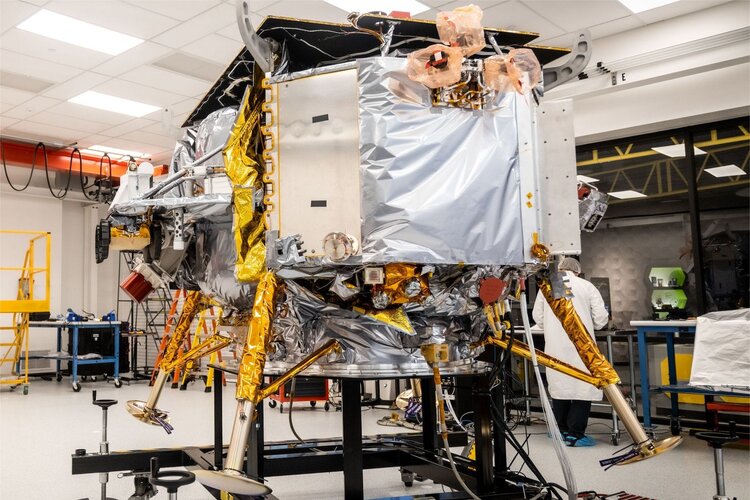The Astrobotic Peregrine lunar lander, due to launch to the Moon later this year, carrying the PITMS instrument on the payload deck on its left side.
PITMS stands for Peregrine Ion-Trap Mass Spectrometer, and it is a device that will sniff out molecules close to the Moon's surface to chart the composition of the lunar exosphere, the particles buzzing around its surface that don't quite make up an atmosphere.
The Peregrine lander is aiming for a lunar touchdown in Sinus Viscositatis near the Gruithuisen volcanic domes, on the northern lunar hemisphere. It is the first time that a spacecraft will land this area, and it will give the mass spectrometer a good overview of the exospheric modules in a pristine location.
The PITMS instrument is a collaboration between ESA/ESTEC and NASA's Goddard Space Flight Center, where ESA provides the Exospheric Mass Spectrometer that is at the heart of the PITMS instrument, and Goddard provide structural, mechanical and thermal elements. The PITMS operations are led by Principal Investigator Barbara Cohen (NAA GSFC) with support from a NASA/ESA selected science team.



 Image:
Image: